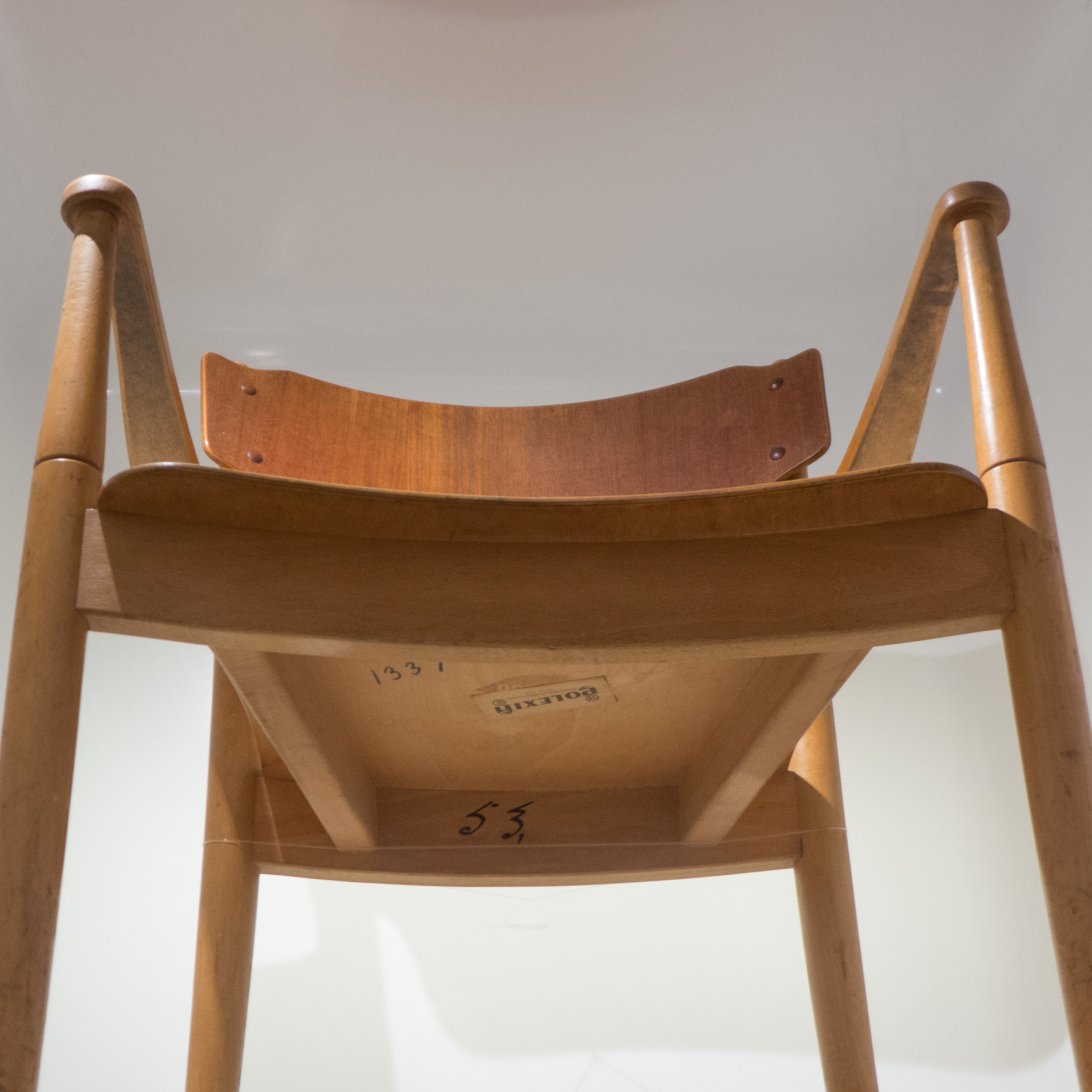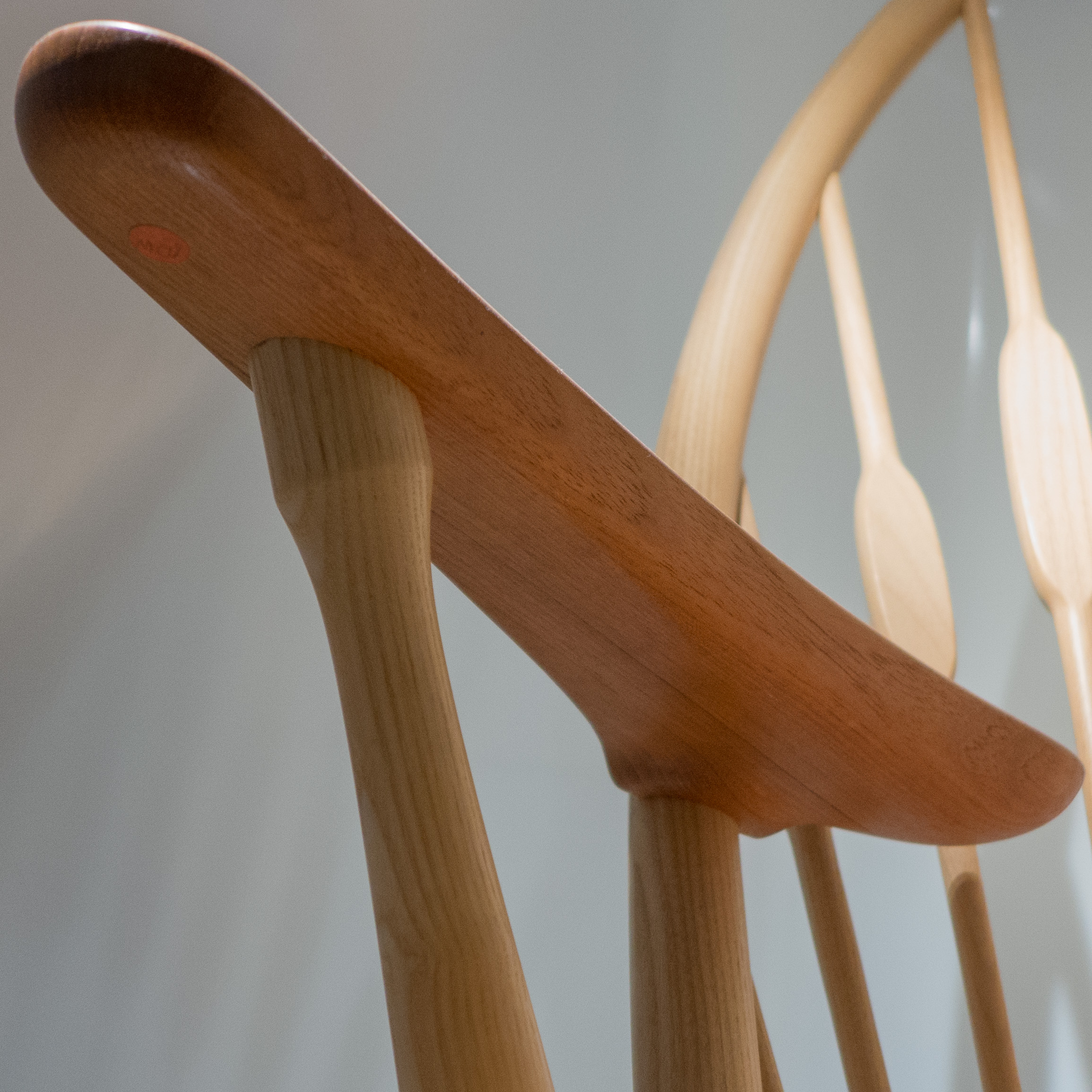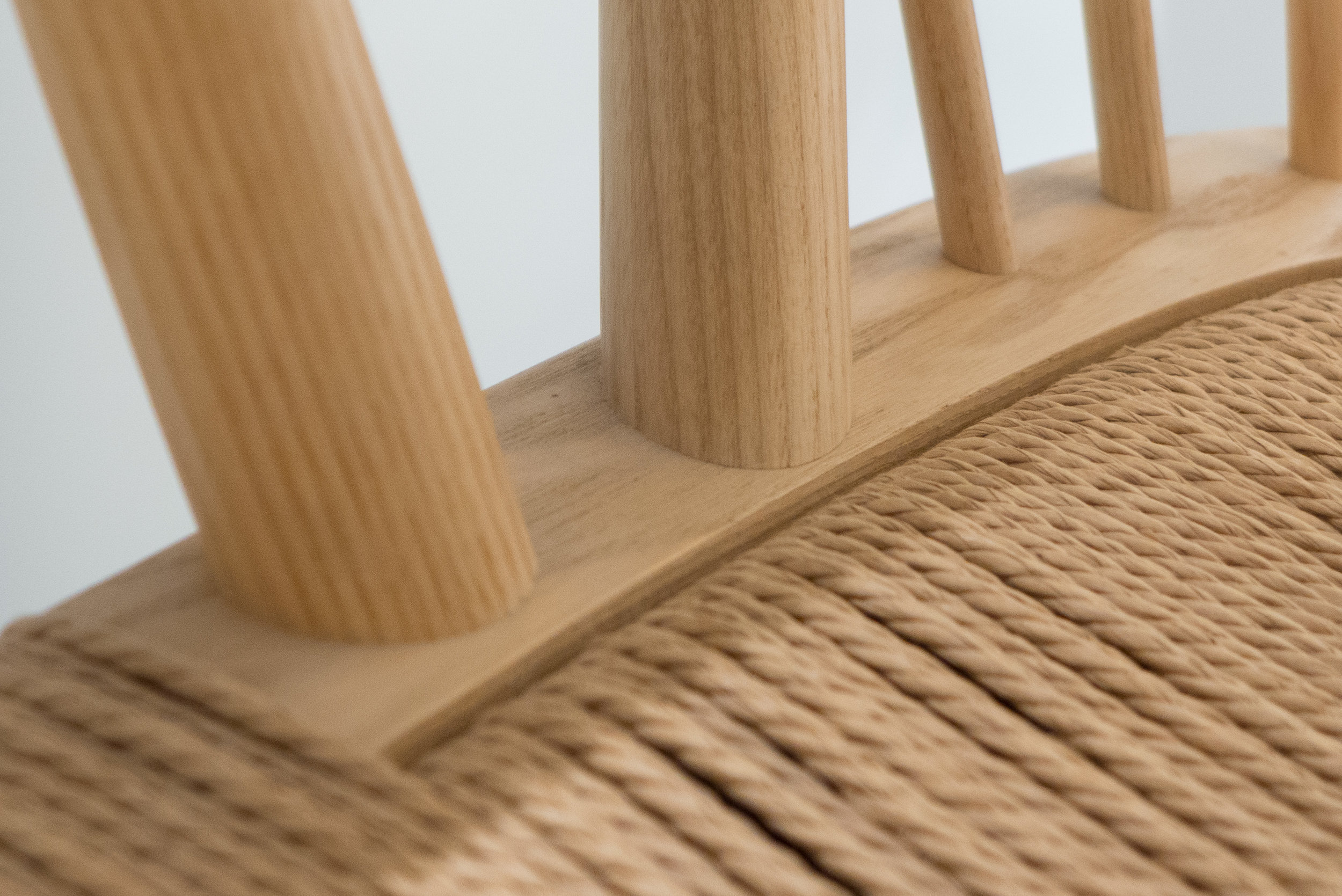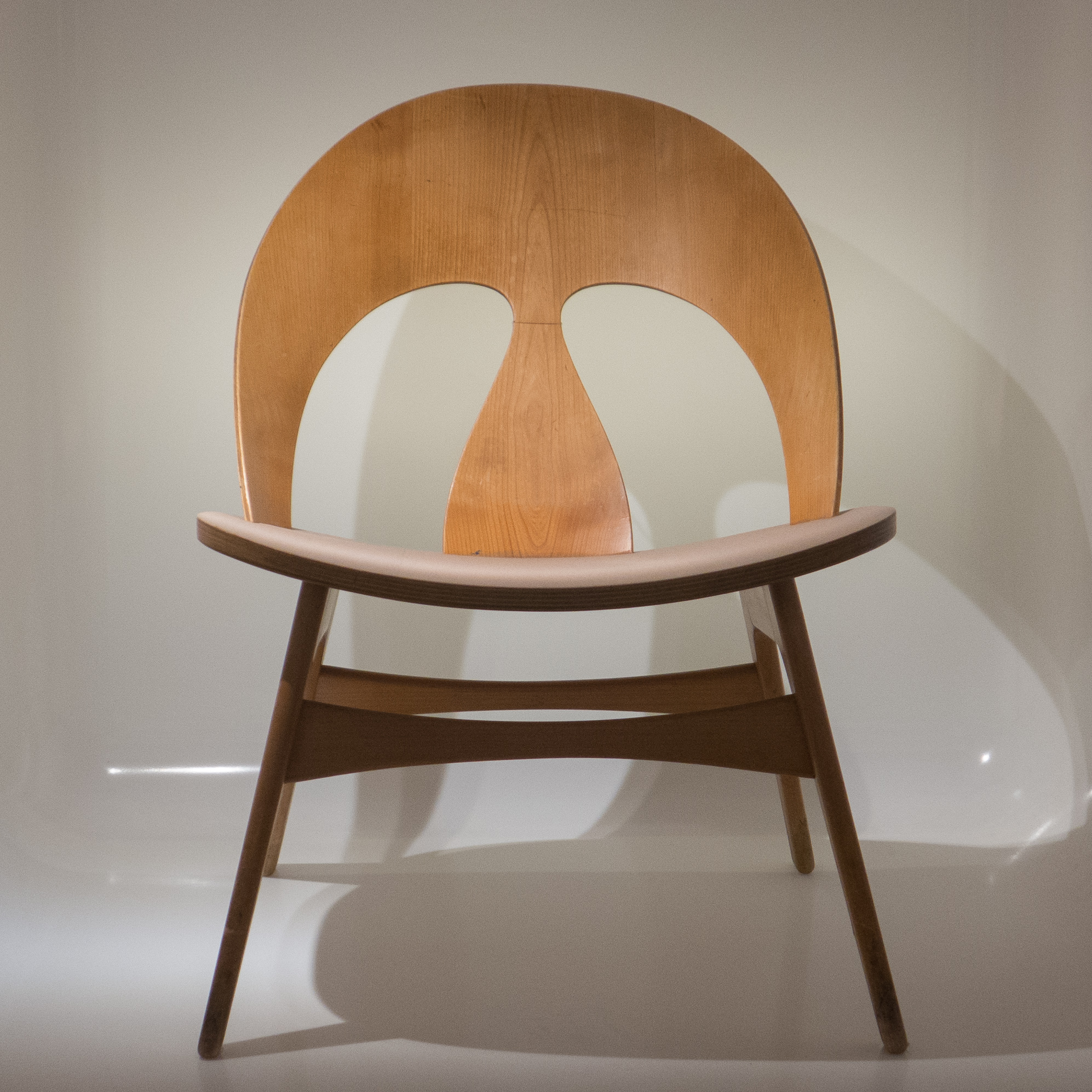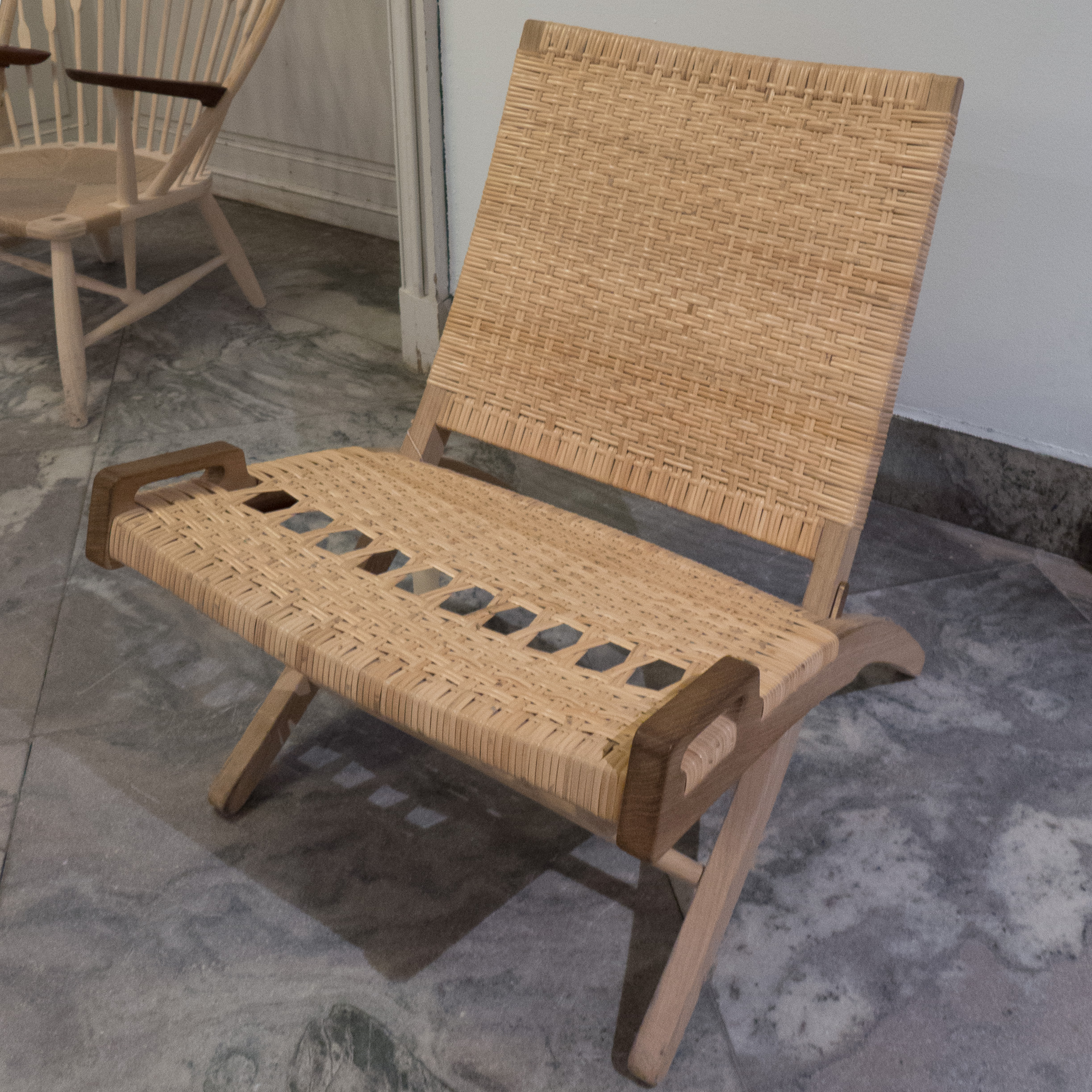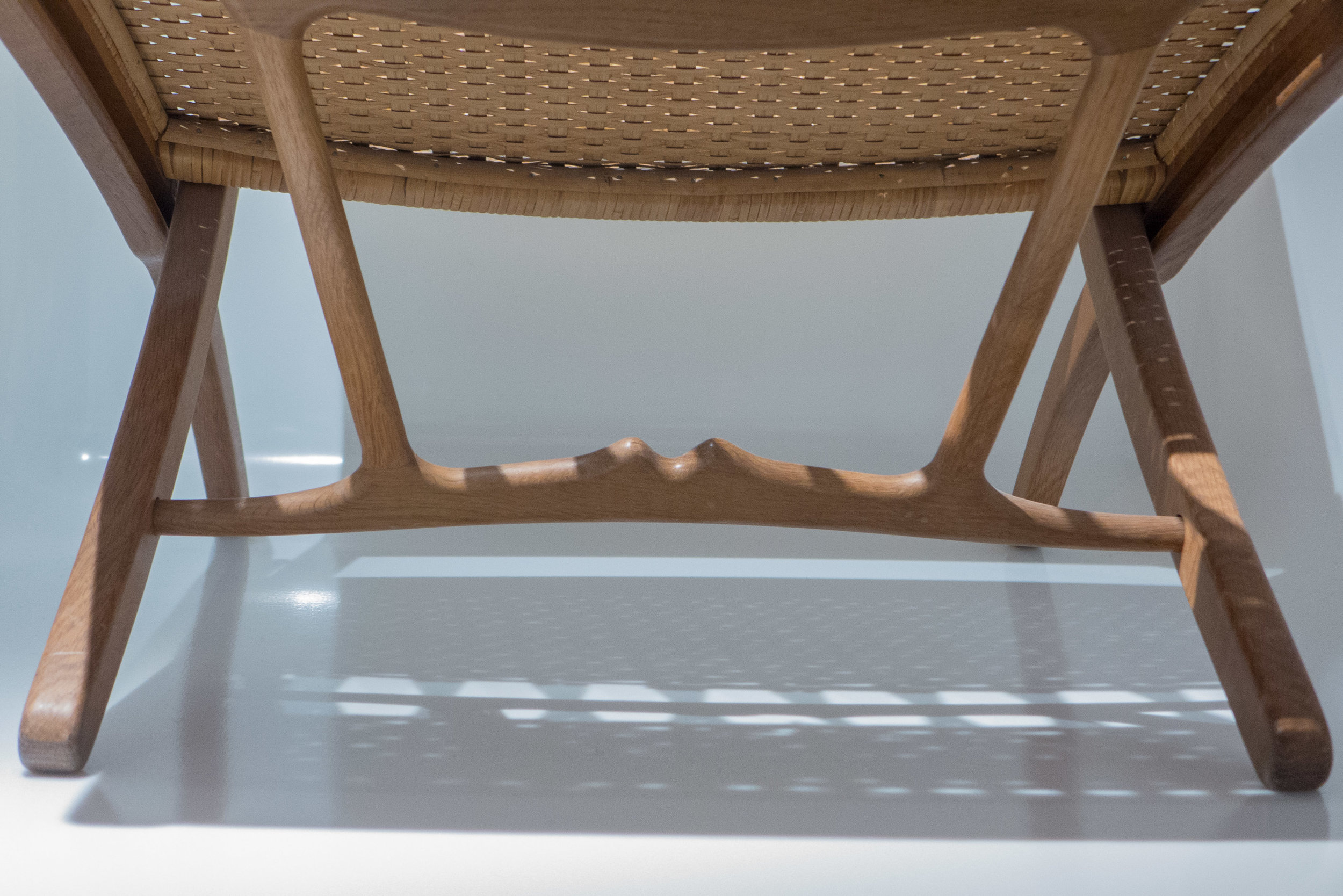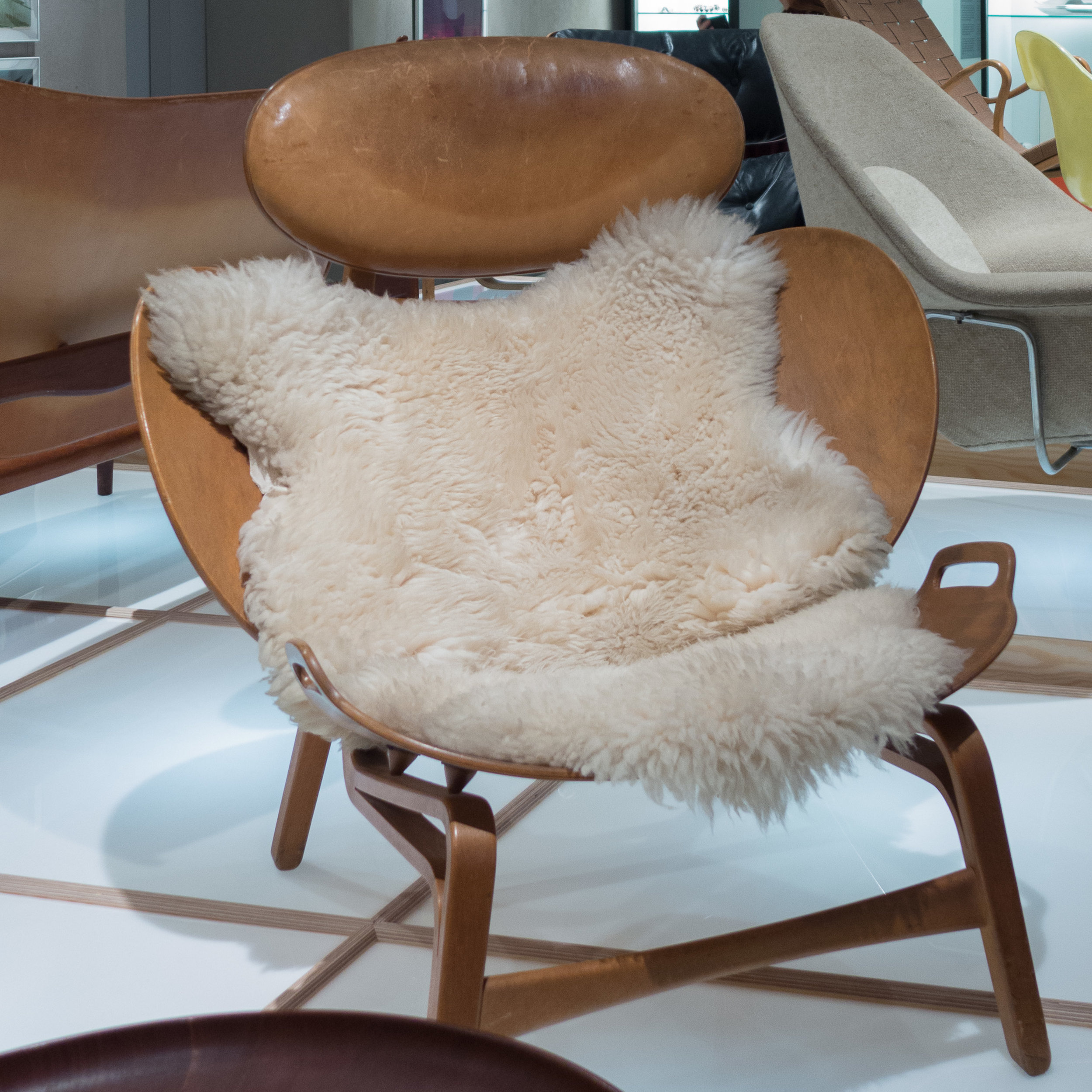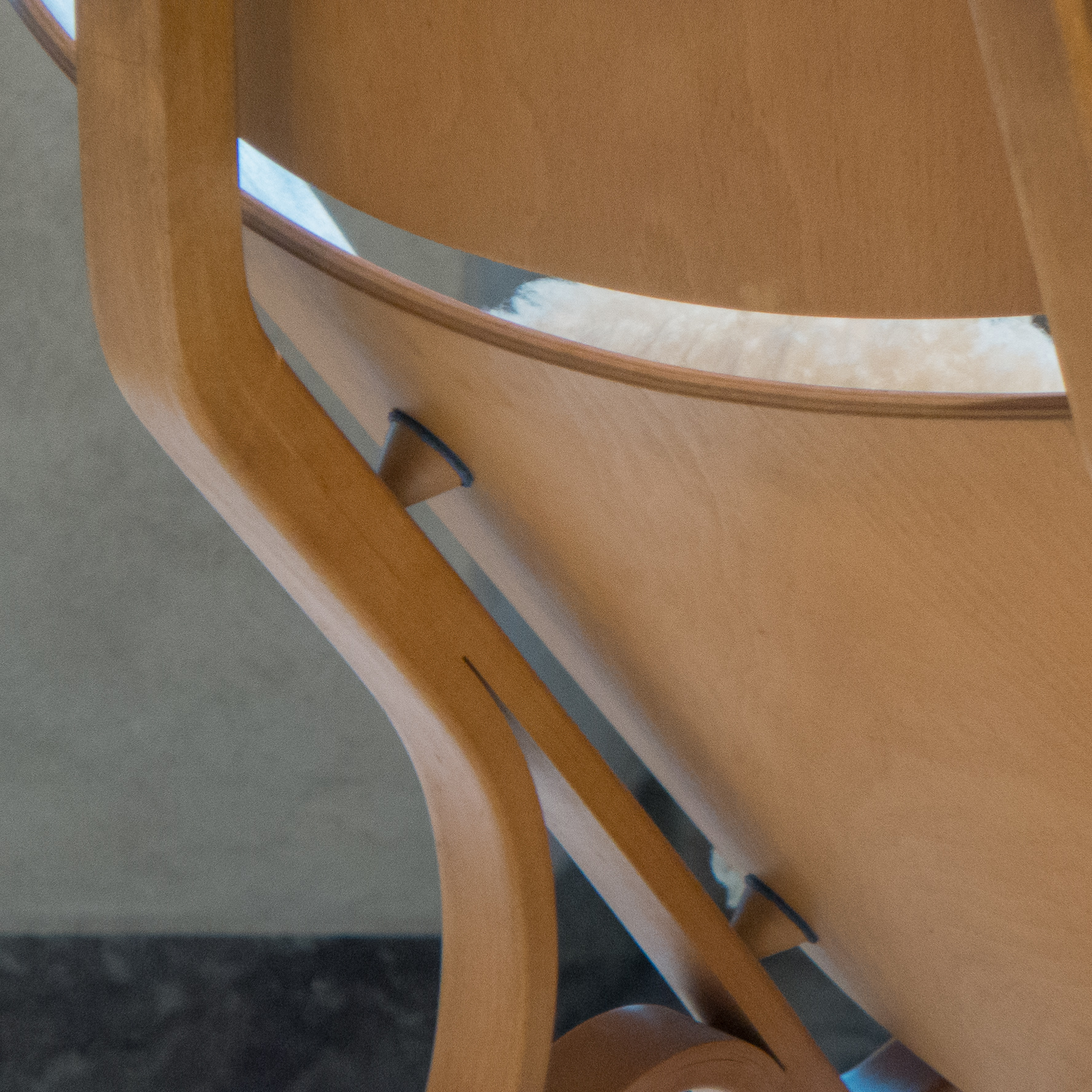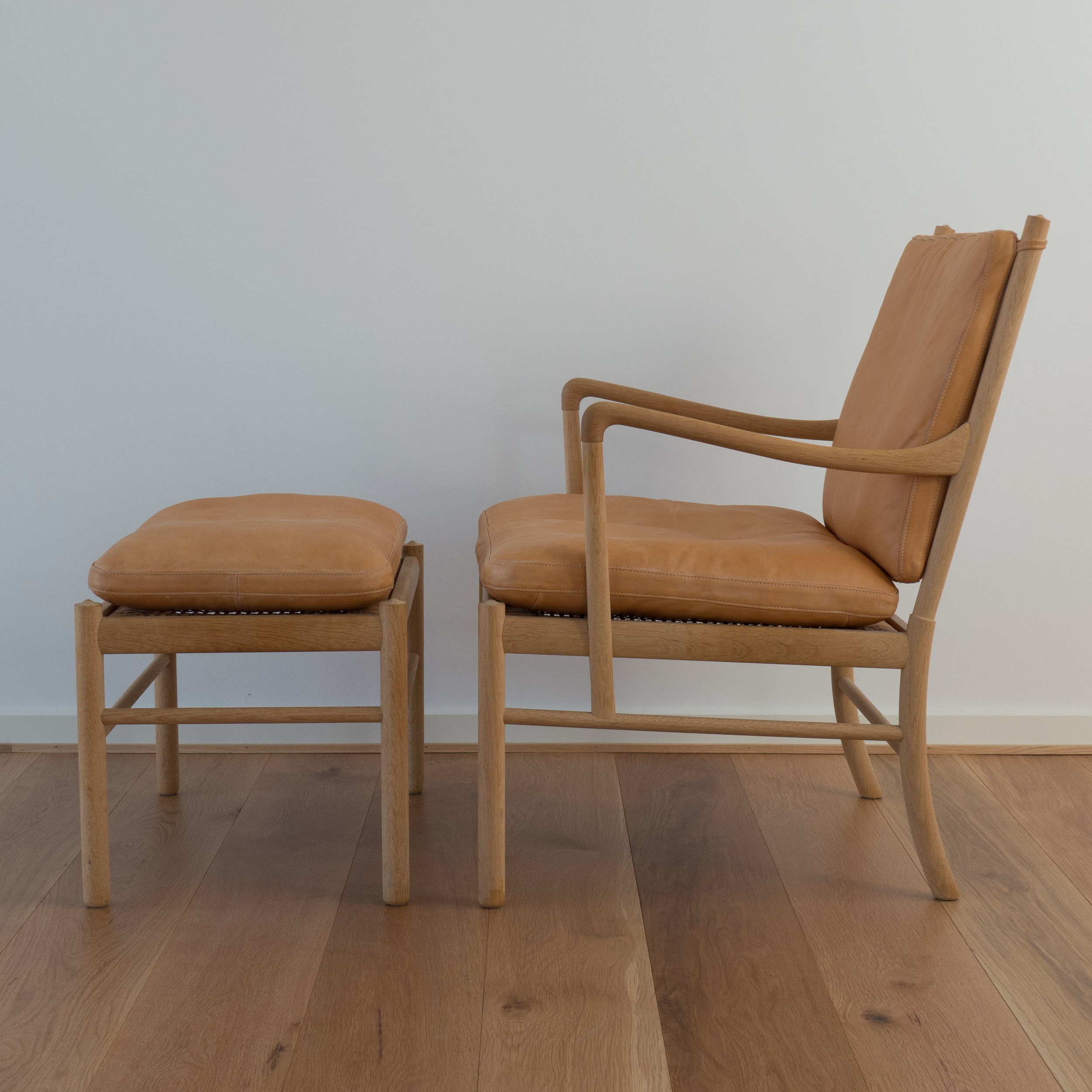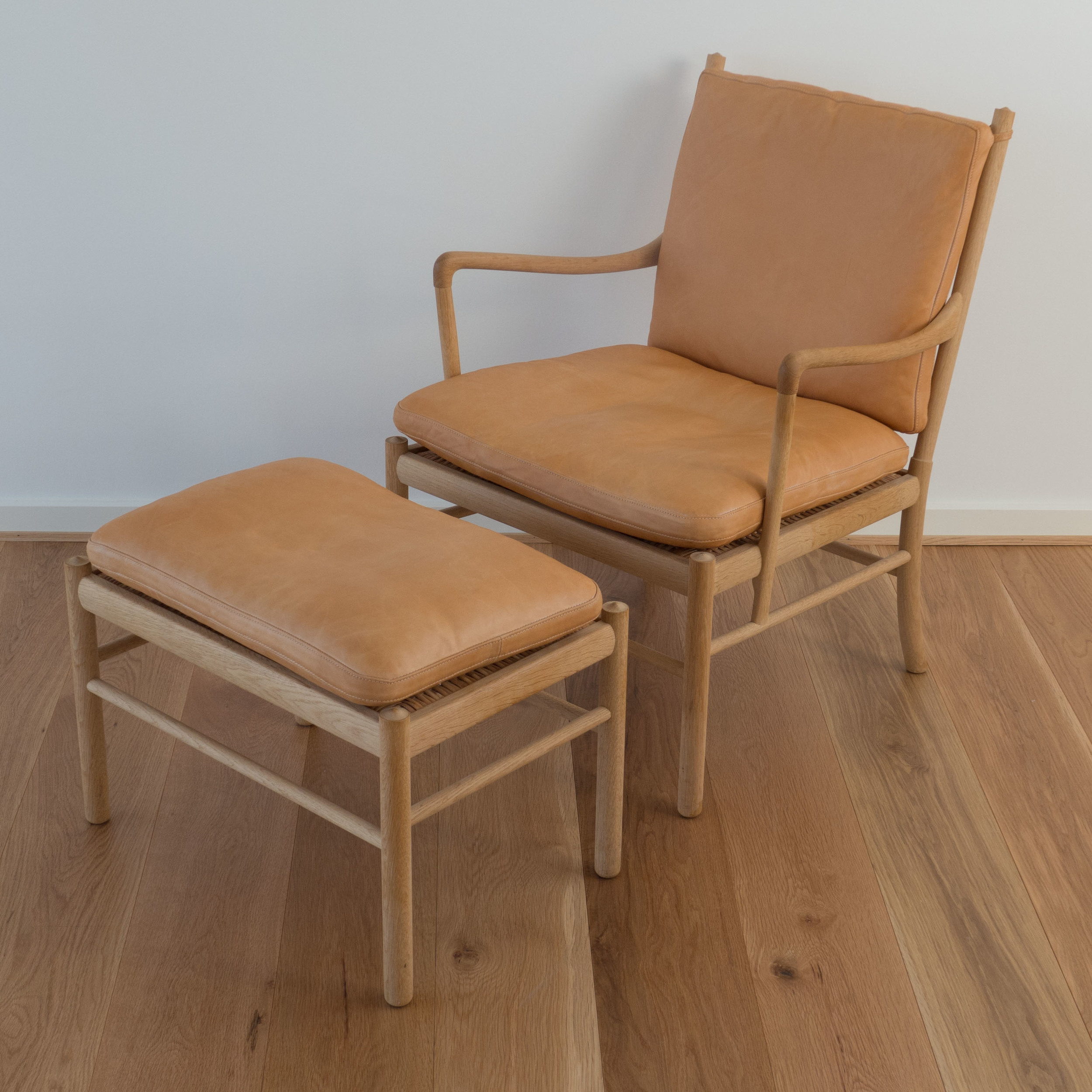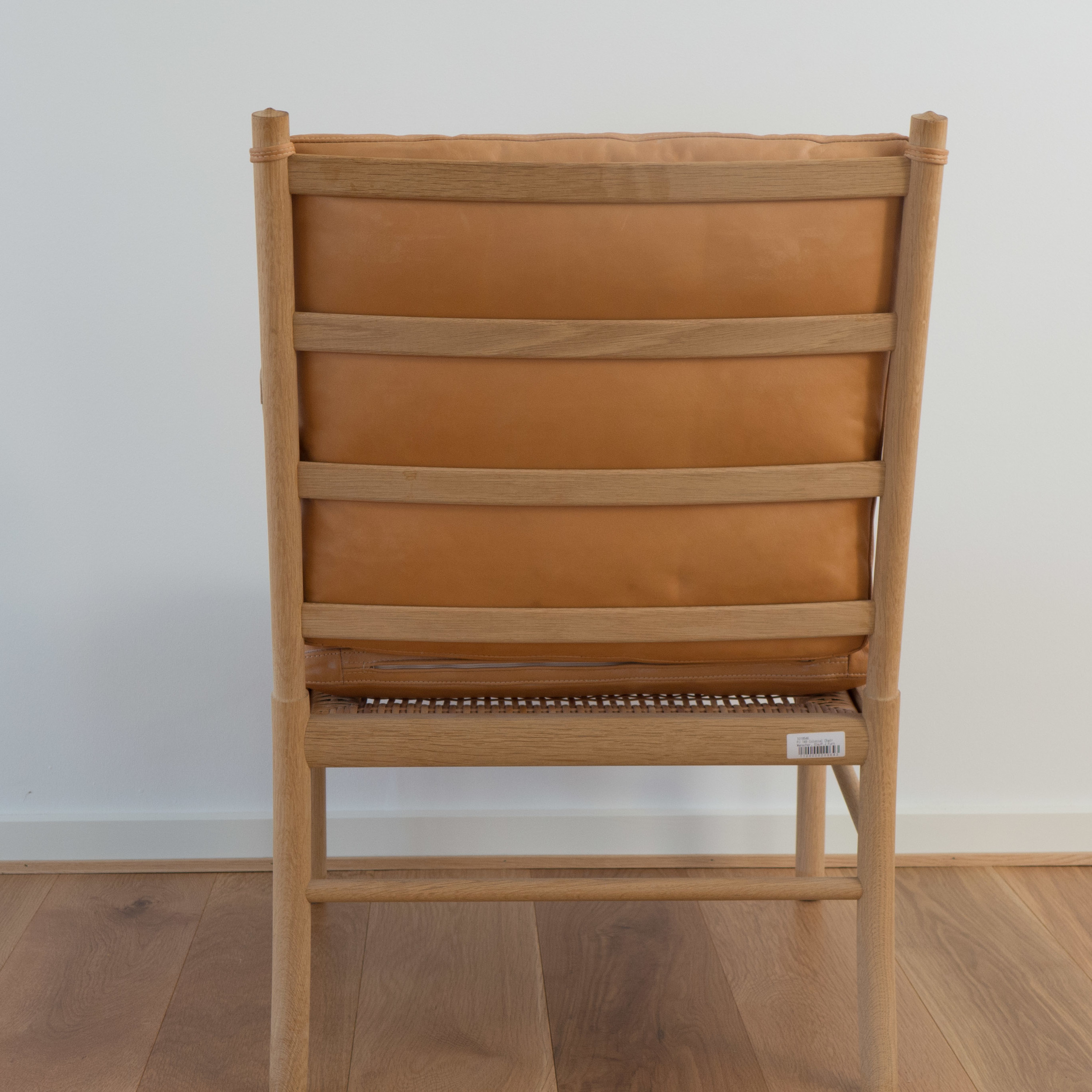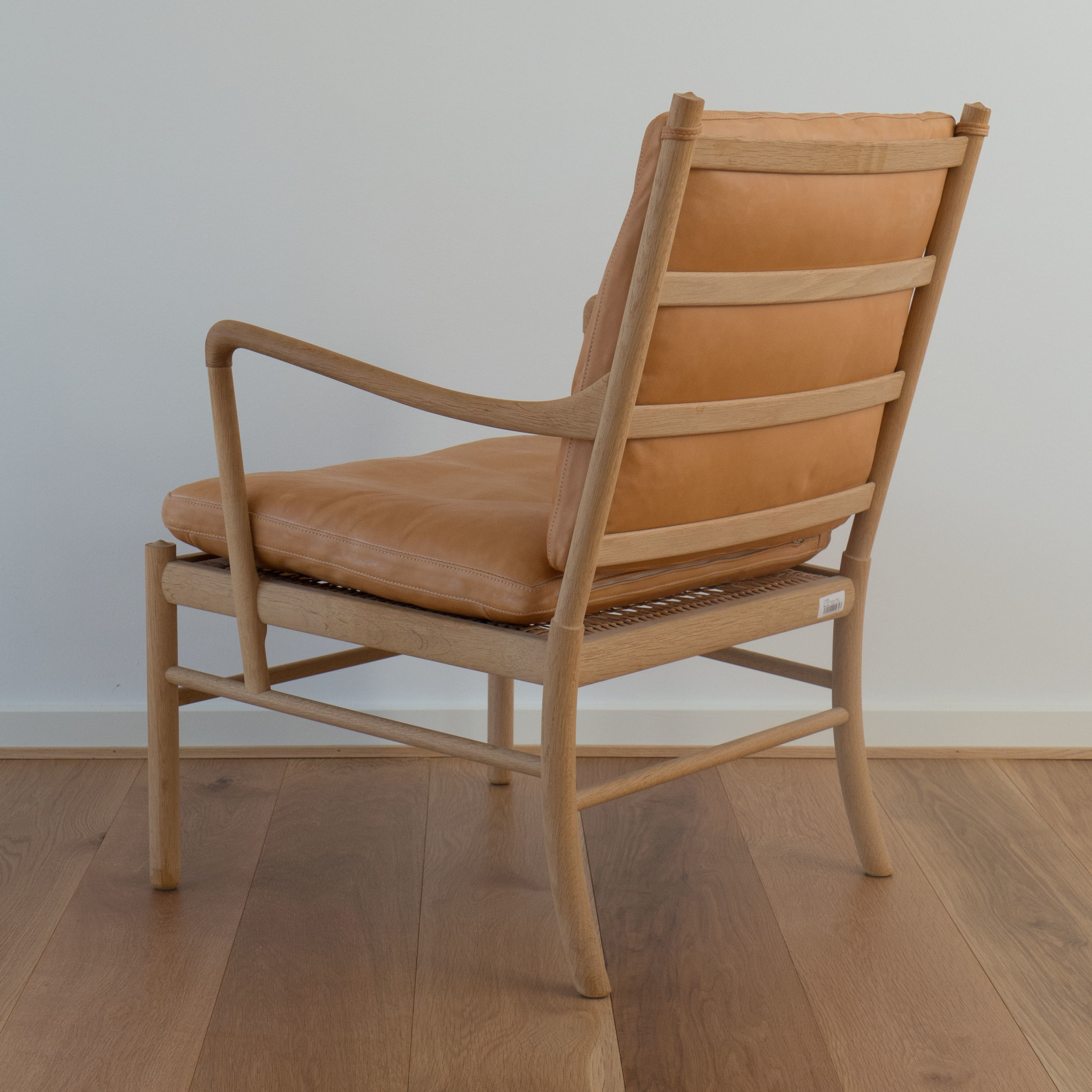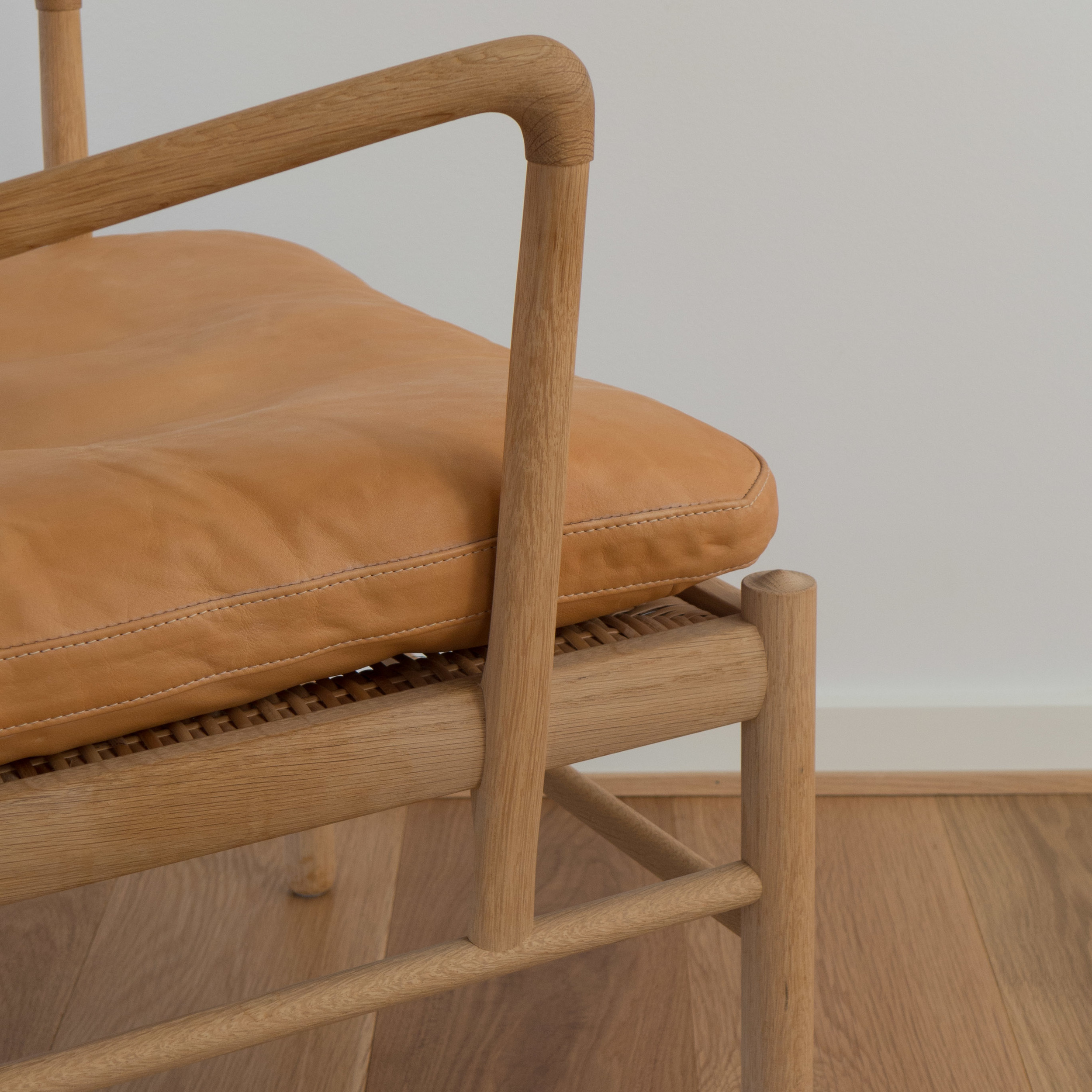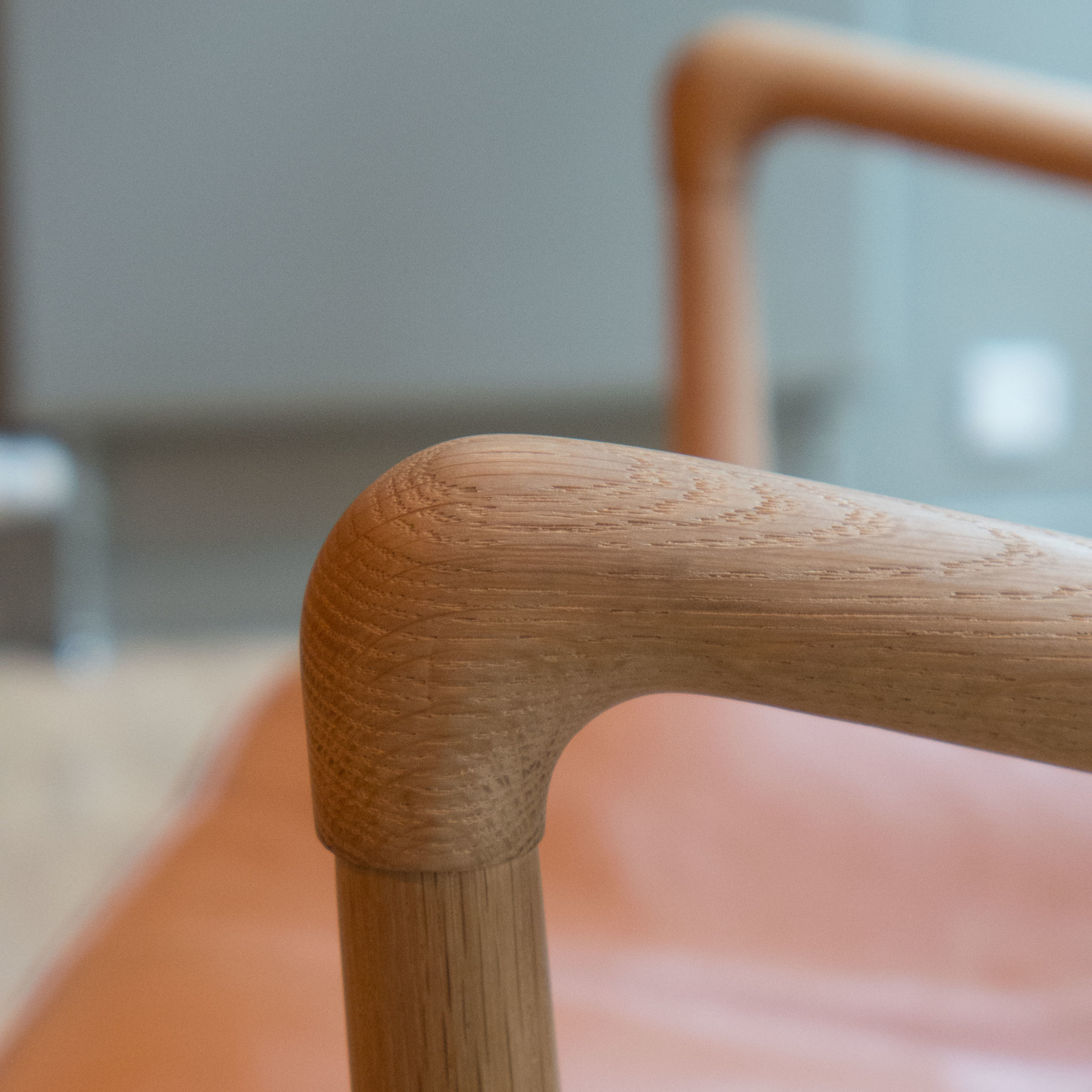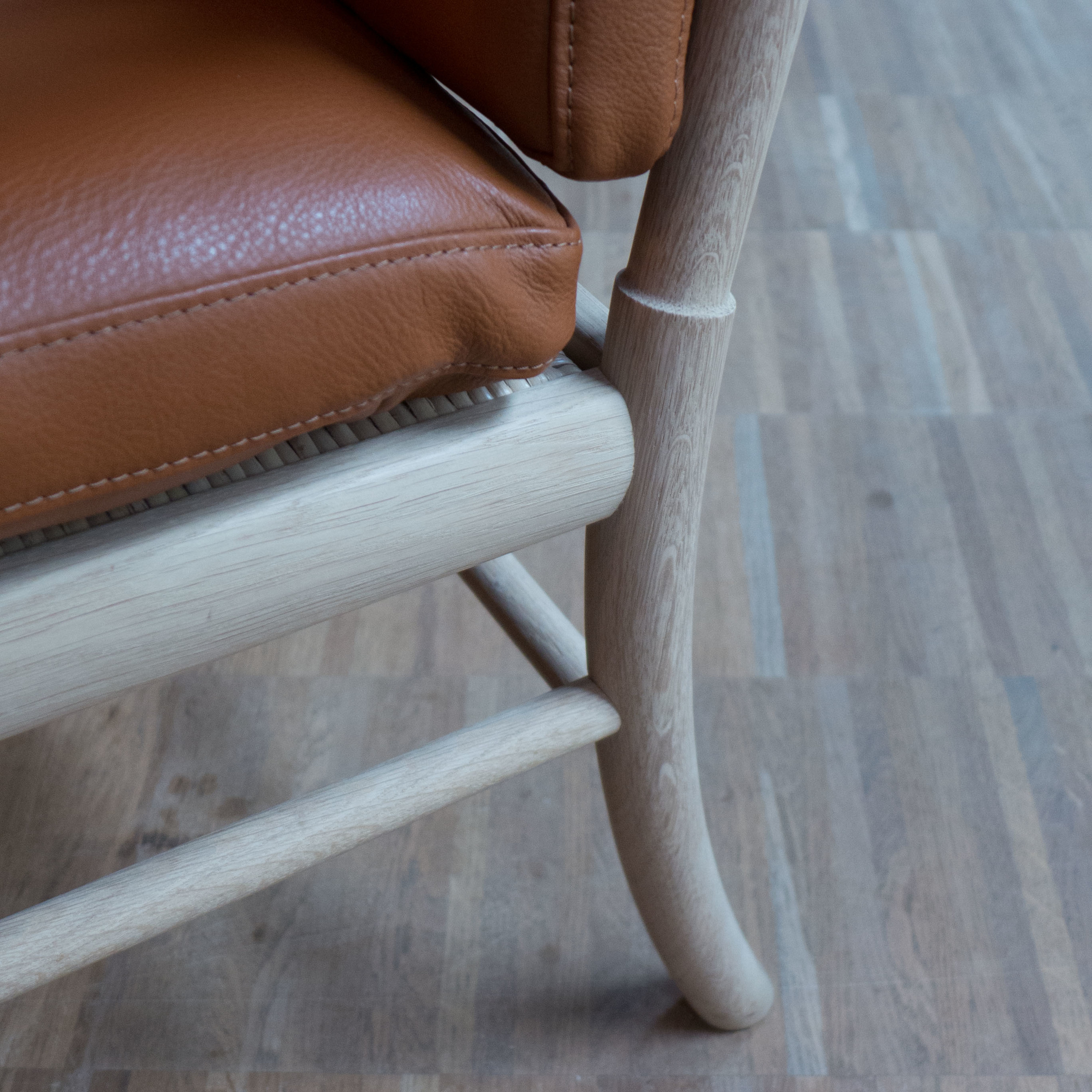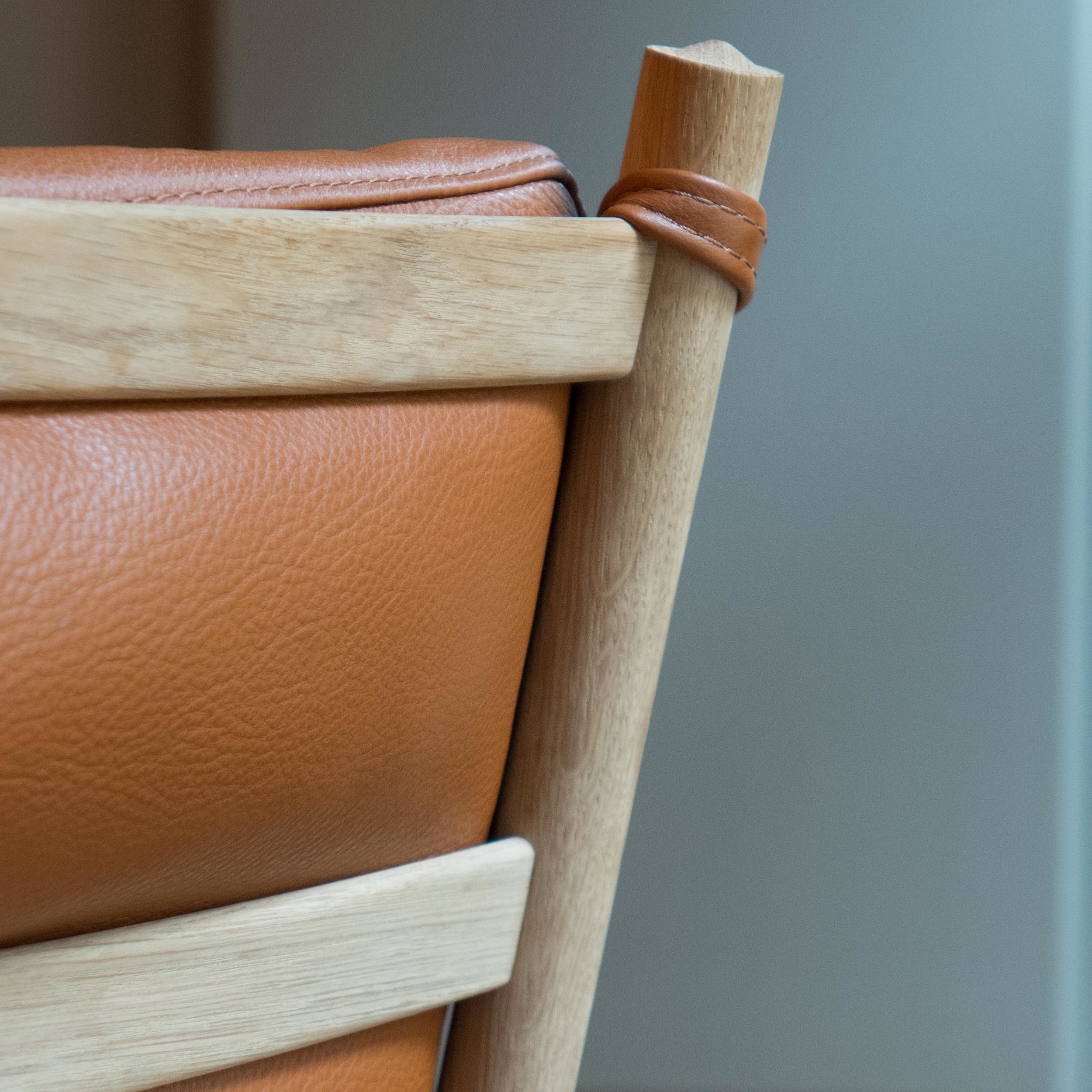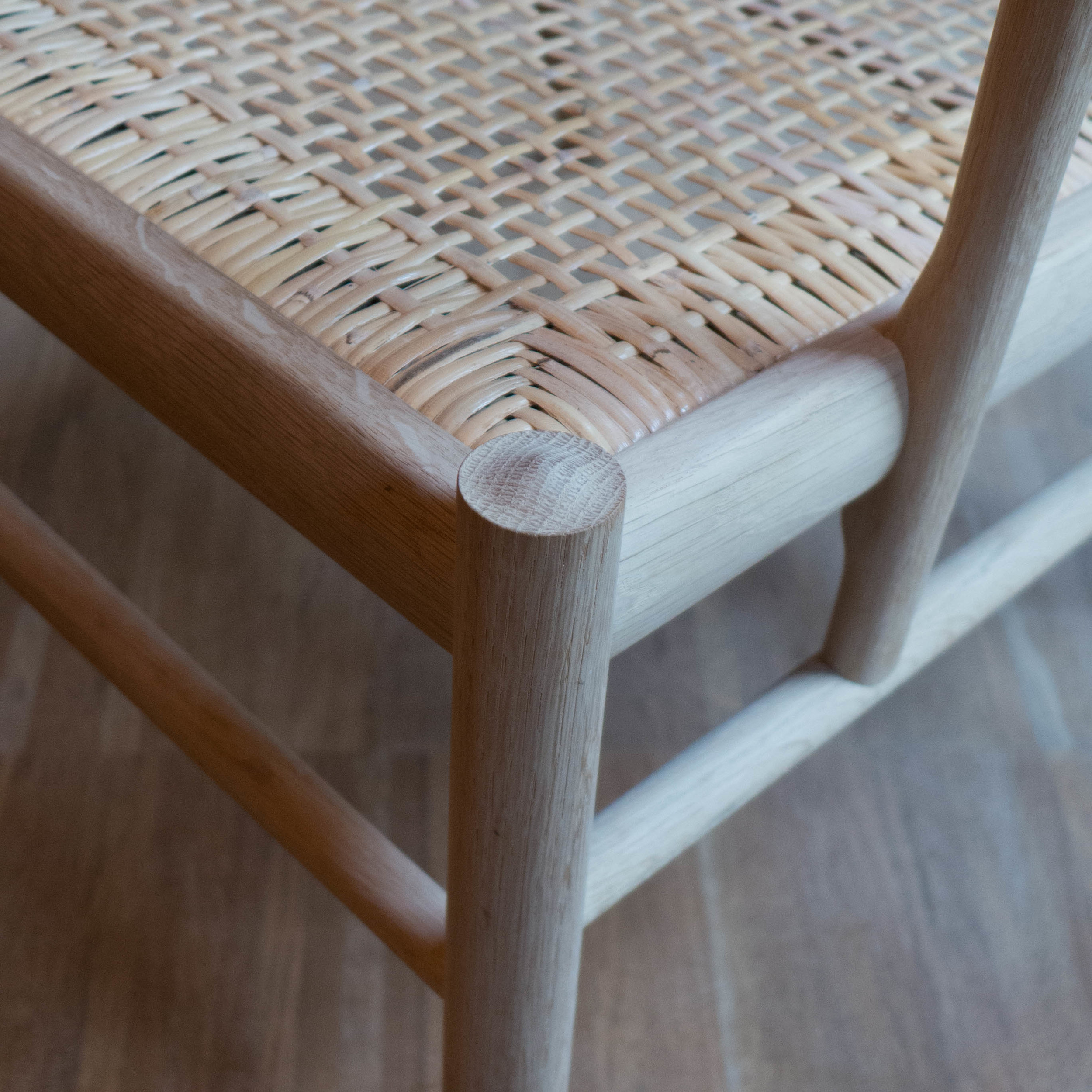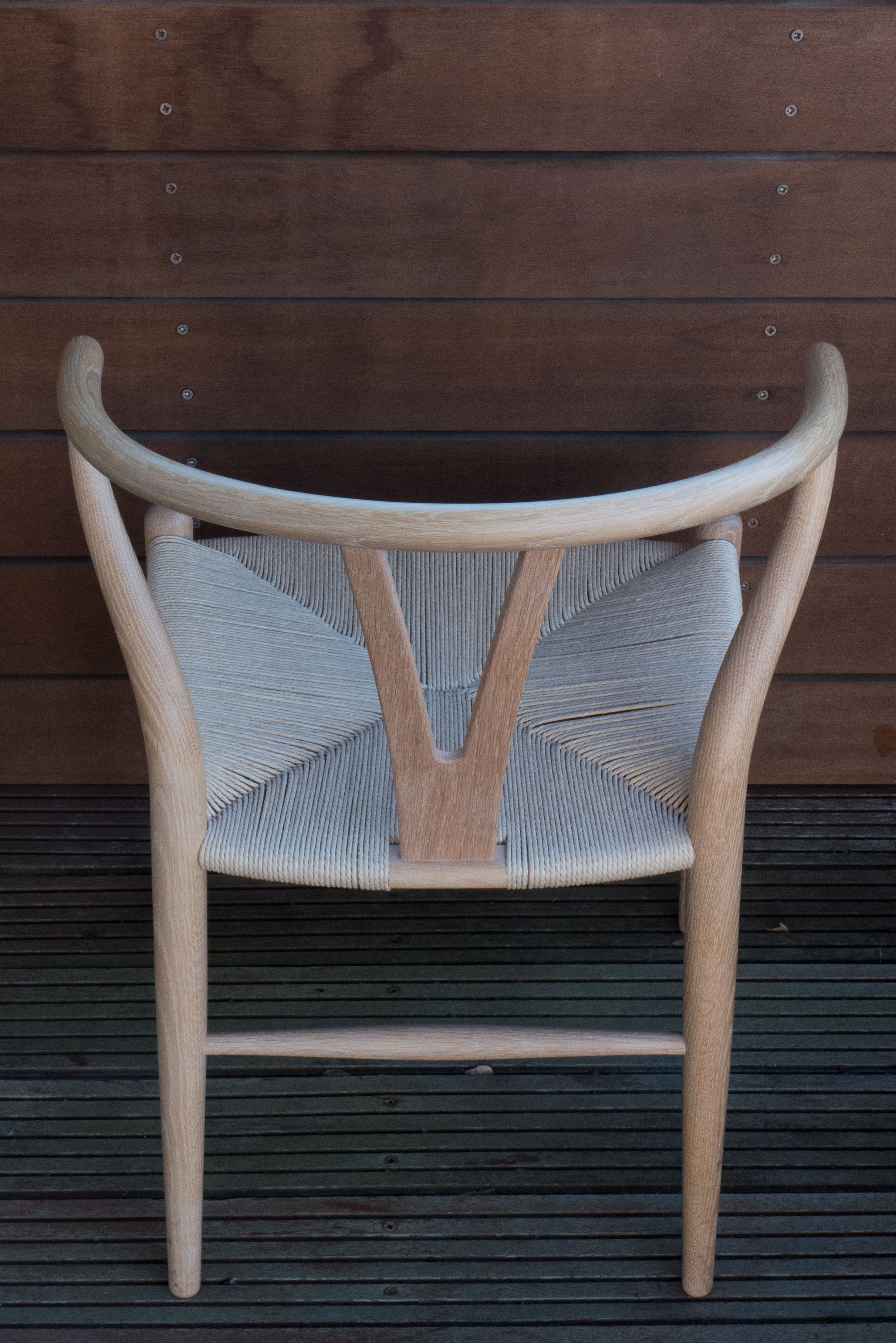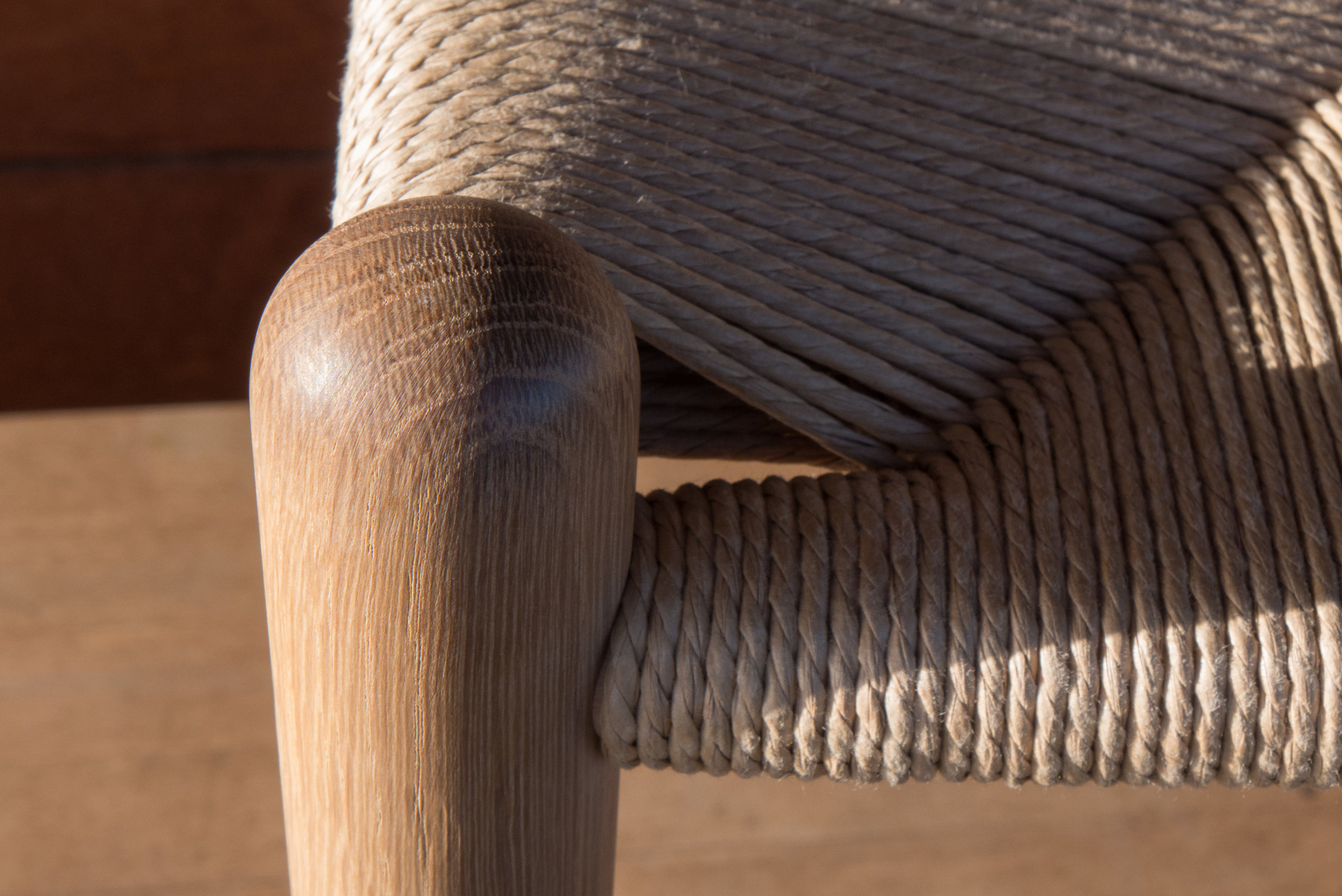Kinastol / Chinese Chair FH1783 by Hans Wegner 1944
/photographs of the chair in the collection of Designmuseum Danmark
Kinesiske stole og dampbøjede stole / Chinese chairs and steambent chairs
Chinese chair c.1800 in the collection of Designmuseum Danmark
the series of chairs designed by Wegner that were based on the form of the Chinese Chair with the Y or Wishbone Chair to the right. This was part of the exhibition just one chair at Designmuseum Danmark that marked the anniversary of the birth of Hans Wegner
There is a Chinese chair in the collection of the design museum that seems to have fascinated Danish furniture designers. Dating from about 1800, it has a box-like lower frame with square and square set legs with stretchers that are only just above the ground. Flat, shaped pieces are used - inset from the frame of the seat and the legs as reinforcements - almost like angle pieces or angle brackets - but what seemed to have intrigued designers in Denmark was the complex curve of the back rail or back rest that is bent round and down towards the front ends and this is supported at the centre of the back by a thin plank or splat that is housed in the top of the back rail of the seat and in the underside of the curved back rest.
Hans Wegner produced several chairs of this form - at least seven through the 1940s - with some going into production and some remaining as prototypes. Christian Holmsted Olesen in his book Wegner just one good chair illustrates these and explains the sequence of development that was to lead on to the design of the Wishbone Chair.
This sequence was set out in one section of the major exhibition on the work of Wegner that was at the design museum in 2014 to mark the anniversary of Wegner's birth.
Wegner was in his late 20s and early 30s when he was working on these designs so, in many ways, what you see here is a process through which the designer learnt his craft. He was working with cabinetmakers in close partnership and much of this was a learning process for them as well as they pushed materials and shapes and wood-working techniques to new levels but above all it was actually commercially led so was about not just novelty but about how you could produce good chairs in larger quantities.
In the Chinese Chair here you can see some features that were awkward or difficult to construct in wood.
The splat or very thin plank at the back supports the back of the person sitting in the chair but the relatively wide top sits oddly with the curve of the back piece and, in this early example of the chair, actually emphasises the fact that the complex curve is not quite symmetrical around the centre line … so the later Wishbone Chair was given a Y-shaped back in part to get around that but of course it also made the back less dominant.
The curve of the back rail here in Wegner's chair is complex - forming first an arch and then curving round and then up on both sides to form, in one piece, the arm rests but again this is simplified in the later Wishbone Chair by forming a simple single curve - though it's a sharp curve - to be made in bent wood but simply tilting it down at the front.
The complex double curved shape of the vertical pieces that support the back rest of the Wishbone Chair is found first here but instead of being an extension up, in one piece of wood, from the back leg, on the Wishbone Chair, it is here a separate piece that runs down from the arm and then appears to be halved over the outer side of the seat rail and bird-mouthed over the top of the side stretcher and the stretcher itself is shaped so that all-in-all this is a very complicated point in the construction.
The side rails of the seat are set close to the top of the front legs so again make a potentially weak point in the frame as the mortice cut in the leg could be split by the tenon on the end of the rail that forms the join of the two pieces and the slightly lower front rail of the seat and the tenon for the side stretcher are also close together.
The stretchers are flattened ovals in their cross section and the side stretchers are set quite close to the floor which follows the Chinese original but now appears slightly dated … this arrangement of stretchers is common in mass-produced dining chairs made in the 1930s and 1940s.
The legs of the chair are rounded in section but straight (not tapered) and are set vertical so again reflecting a simpler but strong form of construction. If chair legs are angled out and certainly if they are tapered in shape then the shoulders of the tenons become more difficult to cut and the angles of mortices and tenons become more important.
height: 79cm
width: 58cm
depth: 57cm
height of seat: 43cm
note:
The modern Chinese Chair by Wegner was one of the favourite designs of Ejnar Pedersen - co-founder of PP Møbler - and in 1976 the company reissued the chair.
It is still in their catalogue - PP66 - and an upholstered version - PP56 - was added in 1989











